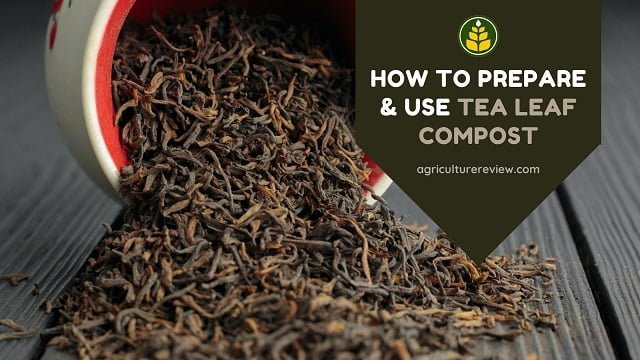Mangoes are tropical fruit trees but can also be grown in subtropical areas. Mangoes are the king of the fruit kingdom because of its easy availability and luscious sweet taste. Mangoes are among the most desired fruits in the world. Mangoes are the best seasonal summer fruit. Mangoes have health benefits too, it is a nutritional fruit. More than 20 vitamins and minerals are present in mango that’s why it is also called as “Super Food”.
Because of its quality and popularity Mangoes have been given the status of National fruit in many countries like:
- भारत
- पाकिस्तान
- फिलिपींस
Mango trees have been given the status of National tree in Bangladesh.
Table of Contents
Nutritional Benefits of Mangoes:
Mangoes are fatless, with no cholesterol and no Sodium. If you eat one whole mango that means you are getting 202 calories. Mango also contain कार्बोहाइड्रेट & fibers. Mangoes have Vitamin A, C, E, K, B12, B6. Mangoes have Iron, Potassium, Calcium, Thiamin, Riboflavin, Niacin, Folate, Zinc, Copper, Manganese, Selenium, protein, etc.
Scope of Mango Farming
151.88 tonnes of mangoes are produced annually in the Indian subcontinent. In India 22.97 lakh hectares of land is used for mango cultivation. India grows many fruit trees out of which mango accounts for 40% of total fruit cultivation. India exports two varieties of mangoes to countries like:
- Middle East countries
- Europe
- and Bangladesh.
Nearly 50 % of global mango fruits are produced in India. China ranks second in the Mango fruit cultivation. Mango cultivation is very easy and it can be practiced with low maintenance and a few basic knowledge on the mango cultivation process.
Botanical Classification Of Mango
Common Name: आम
वानस्पतिक नाम: मैंगीफेरा इंडिका
परिवार: एनाकार्डिएसी
Genus: Mangifera
Chromosome Number: 2n= 40 (Amphidiploid)
Center of Origin: Indo Burma region
क्षेत्र और उत्पादन
- भारत accounts for 56% of global mango production in the world and hence is the largest producer of mango.
- India has an average productivity of 6.6 MT/ hectare.
- 2,309,000 acres of land is under mango cultivation in India.
- Globally mango production is estimated at around 43 million metric tonnes.
- भारत produces nearly about 18 Million tonnes of mangoes.
- चीन comes second with a production of about 4.77 million tonnes of mangoes.
- Thailand ranks third with a production of about 3.4 million tonnes of mangoes.
- Other mango producing countries are Mexico, Indonesia, Pakistan, Brazil, Egypt, Bangladesh, Nigeria, Philippines, Sudan, Kenya, Vietnam, Haiti, Tanzania, Cuba, Yemen, Peru, Columbia, Nepal, Madagascar, Democratic Republic of Congo, Niger, and Guinea.
- In India mango is cultivated commercially in the following States: Andhra Pradesh, Uttar Pradesh, Bihar, Gujrat, Karnataka, Maharastra, and Odissa.
Mango Farming Guide
मिट्टी की आवश्यकताएं
- Mango tree could be easily grown in rich fertile sandy loam to loamy soil but red loam soil is considered ideal for mango tree cultivation.
- Soil should not be facing waterlogging problems, maintain good drainage by adopting irrigation systems like the ring basin method of irrigation.
- The ideal pH of soil for mango cultivation should be in the range of 6.5 to 8 pH.
जलवायु और तापमान
- आम can be easily cultivated in tropical areas where the annual mean temperature is around 26.7 degrees celsius.
- Temperature ranging between 23 to 27-degree celsius is good for mango.
- Mango tree requires a good frequency of rainfall during June to October that is its growing period and less frequency of rainfall during the winter season.
- Temperature plays a major role in mango. Flowering, fruit set, and fruit development is directly related to temperature.
- Depending on the variety mango tree performs well in both areas receiving high rainfall in the range 25 to 250 cm annually to areas receiving low rainfall.
Season of Planting
- Mango can be planted from July to December. In the case of irrigated mango cultivation, it can also be planted from February to March.
इन्हें पढ़ना आपको भी अच्छा लगेगा:
और पढ़ें: The Ultimate Guide On Banana Farming!
और पढ़ें: International & National Agriculture Days!
Propagation of Mango
Mango tree can be propagated sexually as well as asexually.
- Mango forms seeds with the help of cross-pollination.
- It can be propagated through various types of vegetative propagation like:
- Inarch/ Approach grafting
- Veneer grafting
- Stone epicotyl grafting
- Softwood grafting
- बडिंग
- Air Layering
रोपण
- Planting distance depends on variety, fertility level of soil, and the general growth condition of the area.
- When growth is excessive then distancing should be 12 × 12 meters but in dry zones with less growth distancing should be between 10 × 10 meters.
- If you are planning for high-density planting then distancing can be 5 × 3 or 5 × 2.5 or 3 × 2.5 or 2.5 × 2.5 meters.
- Size of pits: Pits of 0.5 × 0.5 × 0.5 meters can be dug at desired distances when soil is loamy and deep.
- In shallow and hill soils pit could be of 1 × 1 × 1 meters in size.
- Filling of pits: Pits should be filled with soil mixed with 50 Kg FYM (Farm Yard Manure). The proportion of soil and manure can be kept in the ratio 1:3. If there is insect infestation in the soil then spray insecticides.
Training & Pruning in Mango Tree
- The training in the mango trees is very essential in its early stages to give proper shape to the growing tree.
- Rootstock sprouts and low lying branches a minimum of 75 cm of the main stem need to be removed.
- Remove overlapped, intercrossed, diseased, old, and dried branches in old trees to get good sunlight and aeration on the tree parts.
- For the internal branches, pruning may be done in the months of August to September.
- Flowering should not be allowed for up to three years.
Fertilizer Requirements of Mango Tree
- Fertilizers can be applied in two split doses, First half doze should be applied immediately after the first harvest of mango fruits in June to July and the other half doze in अक्टूबर in both young and old Orchards. Irrigate soon after fertilizer application if there is no rain.
- FYM should be applied @ 10 Kg in the first year, increase this doze by 10 Kg annually.





